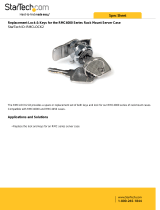Quick guide
Customers, properties, receivers, reader,
transmitters and transponders
To get started, create one or more customers. Once a
customer is created, you can add properties to the
customer. Find out more about the creation of customers
and properties on page 11 in section “Customers and
properties”.
Properties contain receivers or RFID-readers, which can
be operated by the assigned transmitters or RFID-
transponders. A transmitter can be assigned to multiple
receivers of the same site. A transponder can be
assigned to multiple readers of the same site.
Transmitters and transponders are identified by their
serial number. In addition to transmitters and
transponders, which only support either classical radio or
RFID there are bi-technology-transmitters supporting
both in one device. Please learn more about receivers
and readers on page 15 in section “Creating receivers".
Once you have added transmitters to a receiver or
transponders to a reader you can transfer the data to the
memory module using the programming device. Learn
more on page 27 in section “Transmission of transmitter
data to a memory module”.
If you are using the newer EKR(4)IRPT receiver, you can
submit your settings through a network connection.
Virtual serial numbers
In order to add new transmitters to a receiver or new
transponders to a reader you would have to plug in the
memory module to the programming device. This can be
inconvenient. If you know in advance that you will add
additional transmitters to a receiver or transponders to a
reader at a later time, you can add “virtual transmitters” or
“virtual transponders” ahead of time. You do this by
adding “virtual serial numbers” to the receiver or reader.
Once you want to use a transmitter or transponder with
the receiver or reader you can write a virtual serial
number already known by the receiver / reader to the
transmitter / transponder. The transmitter / transponder
can operate the receiver / reader without a need to
reprogram the receiver / reader. Please refer to page 20
in section “Adding virtual serial numbers”.




















